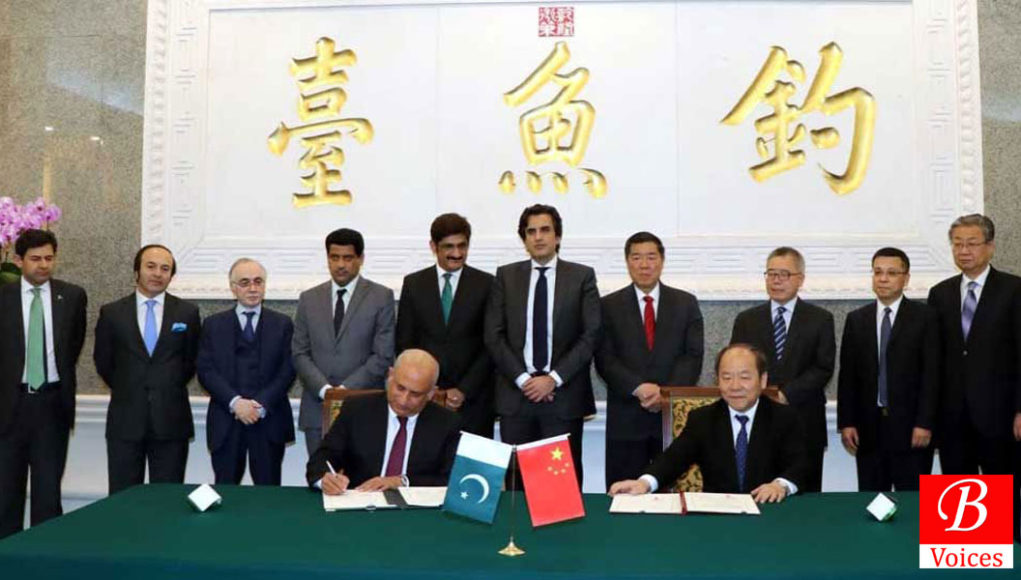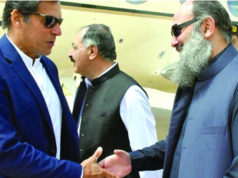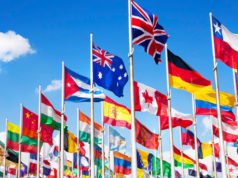Tahira Khan
The current decade is all about the rising influence of China and one of its ambitious projects known as the Belt Road Initiative (BRI). BRI is also referred to as ‘The Silk Road’. The initiative comprises the development, investment, and infrastructure projects that will cover land ranging from East Asia to Europe.
Historically, the original Silk Road was established during the reign of the Han Dynasty. At that time, Silk Road provided connectivity for the region that is now known as Central Asia. Previously, the road linked countries including Kazakhstan, Afghanistan, Tajikistan, Turkmenistan, Uzbekistan, and Kyrgyzstan. In the south, the old route linked the region of the subcontinent which is now comprised of India and Pakistan. Additionally, the route extended 4000 miles toward Europe.
Read Also: Gwadar Security and Future of CPEC
Perhaps, the Twenty-first century is the era of narratives. Following that, it is pertinent to define the strategic narrative of BRI as well. As per the words of Fox;
“We have been theorizing all the time. The need is for us to gain greater theoretical self-awareness so that we can subject our theories to a more sustained and penetrating critical analysis.”
According to Chinese authorities, BRI will bring prosperity, peace, and connectivity. In 2013, President Xi Jinping visited Kazakhstan and Indonesia. He delivered a speech to address the need to connect via land-based and maritime silk roads. Similarly, in 2015, China combined both the Maritime Silk Road and Economic Belt to improve policy coordination, connectivity, trade, financial integration, and people-to-people contact. The vision and Action plan actually aimed to promote the silk Road and bring connectivity among Asia, Europe, and Africa.
In that spirit, China also established AIIB (Asian Infrastructure Investment Bank) as well. AIIB launched Silk Road Fund to strengthen collaboration between China’s financial institutions and associated markets. However, the participants of the first BRF stressed the need to follow universal principles of trade and non-discrimination along with engaging with WTO.
The excerpt from the joint communique is as under;
“We reaffirm our shared commitment to build an open economy, ensure free and inclusive trade, and oppose all forms of protectionism including in the framework of the Belt and Road Initiative. We endeavor to promote a universal, rules-based, open, non-discriminatory, and equitable multilateral trading system with WTO at its core.”
In particular, Chinese authorities asserted that their globalization and development agenda is inclusive and open to all. But, there are counter-narratives that oppose the rhetoric of BRI. These counter-narratives explain that BRI can be predatory for other countries. It also argues that BRI may lead to dept-trap diplomacy and Sino-centric world order. In this regard, the case of Sri Lanka is quoted as an example where China has bailed out the country in exchange for leasing Hambantota port. Furthermore, countries also show concerns regarding Huawei’s 5G technology and China’s poor human rights records.
To that end, China has formulated a more nuanced strategic narrative of BRI. In this regard, China introduced a new initiative of Clean Silk Road and Green Development. The initiative is not only aiming to provide green technologies but transparency and good governance as well. President Xi also declared that BRI will incorporate widely known international principles to carve out the true potential benefits of the project. Moreover, China is also negating the dept-trap arguments.
In the 2nd BRF, the joint communique explained how China is advancing along the lines of socialism, openness, and development. Internationally, China is supporting a shared future and peaceful prosperity. In particular, China is aiming to address global challenges through multilateral cooperation. Internationally, China is projecting her image as a friend and cooperative partner. While, domestically, the image of a hero is projected.
According to Chinese authorities, BRI principles are parallel with universal norms of multilateral cooperation including EEU (Eurasian Economic Union). Thereupon, BRI is collaborating with both the developing and developed states. According to Chinese media outlets, BRI is significantly making progress with countries including those twenty-two European countries that are part of the project. It is pertinent to note that the Chinese narrative draws references such as the ‘Silk Road Spirit to bring peace and prosperity. Furthermore, China implies that these references go in line with the liberal ideology of the West where trade is seen as a positive act between countries.
According to Thomas Colley and Carloljn Van Noort, BRI encompasses the ontological security of China by narrating the history when China as an economic power. They further reiterate that vision of BRI does not shed light on those historical events where China faced humiliation from other powerful empires. It is perhaps the source of the ontological insecurity of China. Further, the authors mention that CCP takes historical nihilism as a threat to the Chinese social sphere. Therefore, CCP has banned debates relating to the historical roots of the party. The author has explained in detail the narratives regarding BRI in his latest book titled, “Strategic Narrative, Ontological Security, and Global Policy: Responses to China’s Belt and Road Initiative”.
When it comes to the negative image construction of BRI, China focuses on the leaders who support the project. For instance, in the context of Malaysia, Chinese authorities focused on the statement of Mahathir Muhammad. They did not mention that Malaysia, later on, renegotiated the unfavorable terms of the BRI. In addition to that, Malaysian BRI projects are largely seen as a source of corruption. For instance, Former Malaysian Prime Minister, Najib Razak, signed one of the infrastructure deals which, later on, became a corruption scandal. Thereafter, the government canceled the project and labeled the scandal as some local incident of corruption. The Malaysian government has not refused the narrative of BRI as a whole.
Overall, China is focusing on the good and successful projects of BRI and does not put the unsuccessful ones in the limelight. Meanwhile, the project is backing infrastructure projects to fill the financing and connectivity vacuum. Above all, the project is focusing the concept of inclusiveness and affiliation devoid of any acrimony.
According to Thomas Colley and Caroljin van Noort, BRI is supporting the strategic narrative and ontological security of China but it is challenging the ontological security of some other states. Therefore, it is hard for some states such as India and US to coordinate policy frameworks in order to collaborate with China in the context of BRI. As far as Russia is concerned, it may also not fully embrace the BRI. BRI is passing through former Soviet States including Turkmenistan, Uzbekistan, Kazakhstan, and Kyrgyzstan, and thus causing ontological insecurity for the Russian Federation.
Disclaimer: Views expressed in this article are those of the author and Balochistan Voices not necessarily agree with them.
Share your comments!








